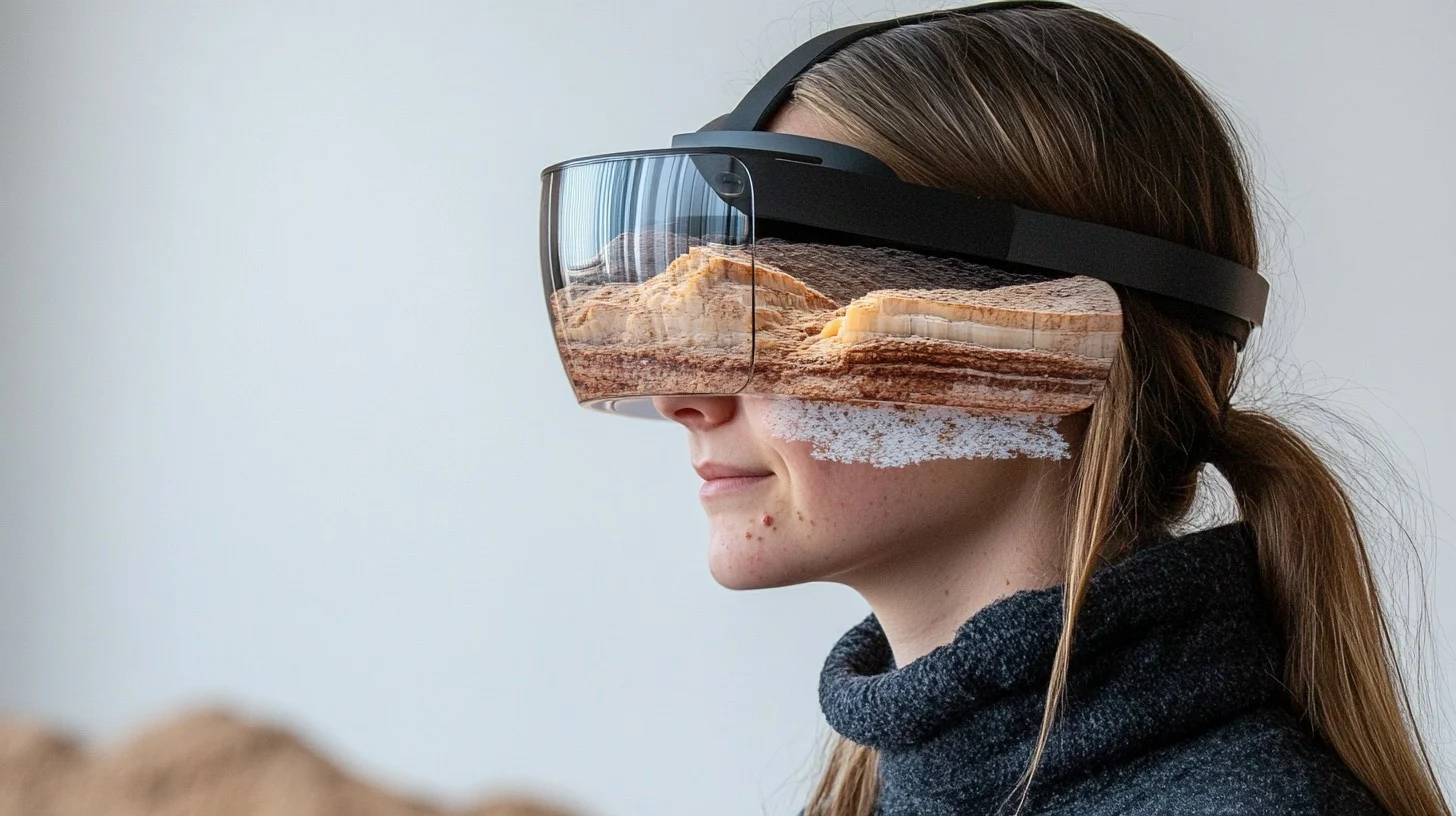Augmented reality (AR) glasses, once the stuff of science fiction, are poised to redefine daily experiences in 2025. From immersive work calls and live navigation to interactive concerts and hands-free content, these futuristic wearables promise to blend the digital and real worlds seamlessly. But despite rapid innovation and surging interest, a big question remains: Are AR glasses truly ready for the mainstream?
What Are Augmented Reality Glasses?
Augmented reality glasses are wearable devices that layer visual or audio information atop your view of the real world. Unlike virtual reality (VR) headsets that block out everything around you, AR glasses keep you grounded in your surroundings—simply adding digital context, navigation cues, messaging, translation, or entertainment through transparent displays or smart audio. Leading models today use built-in cameras, microphones, motion sensors, speakers, or micro-displays to create immersive and useful overlays.
Current State of the AR Glasses Market in 2025
It’s an exciting year for AR technology. Meta’s Ray-Ban smart glasses tripled their revenue in 2025, confirming consumer demand and achieving mainstream attention. Apple’s Vision Pro has propelled AR further, especially in the enterprise space. Meanwhile, Google, Xreal, and other big players are heating up a “smart glasses war,” rapidly improving features and design.
Globally, over 2 billion people are projected to be active users of mobile AR by the end of 2025, and AR glasses shipments could hit 25 million units by 2030. The AR sector’s market size is expected to jump from $1.93 billion in 2024 to $8.26 billion by 2030—a 27.3% compound annual growth rate.
For everyday users, AR is increasingly woven into gaming, shopping, design, and more—laying the groundwork for widespread AR glasses adoption over the next few years.
What’s Driving Mainstream Interest in AR Glasses?
1. Advancements in Technology
Recent breakthroughs in AI integration, display quality, battery life, and user interface have brought AR glasses much closer to mainstream readiness. Modern AR wearables can recognize objects, enable real-time language translation, and even project step-by-step tutorials onto real-world objects.
2. Growing Applications
AR glasses are no longer limited to novelty. They support real, practical needs across sectors:
- Healthcare: Surgeons use AR to visualize internal organs in real time, improving accuracy and training. Hospitals leverage AR for streamlined patient care and remote expertise.
- Enterprise: Businesses deploy AR glasses for remote collaboration, hands-free access to data, and on-site guidance for repairs, manufacturing, and logistics.
- Retail & Shopping: Users can see how furniture fits into their homes, compare products in-store, and even experience interactive ads, driving up retail engagement.
- Entertainment & Social: AR enhances gaming, live events, and even simple messaging, blending digital fun into everyday life.
3. Increasing Affordability and Design
Prices are dropping as technology advances and competition rises. Early AR glasses were bulky, awkward, and expensive. Now, sleeker, lightweight frames and more stylish designs are hitting the shelves. Smart glasses are becoming fashion-forward—thanks to collaborations like Meta with Ray-Ban—that help dissolve the “tech geek” stigma.
What’s Still Holding AR Glasses Back?
Despite huge strides, AR glasses are not without their hurdles.
1. Bulky Form Factor
Current AR glasses are getting lighter, but many still struggle with size and style. Some users find them awkward for all-day wear. As designs slim down, comfort and fashion appeal must continue improving for true mainstream acceptance.
2. Battery Life
Powering high-tech displays and AI processing in a tiny frame is energy-intensive. Many leading models have battery lives of only 2 hours, limiting their use for heavy tasks or a full workday.
3. Cost
Even as prices drop, advanced AR glasses are still relatively expensive compared to mainstream wearables like smartwatches. High-end models remain out of reach for many, though experts expect costs to fall as mass adoption and competition ramp up.
4. Privacy and Security
Always-on cameras and microphones raise understandable concerns. Users and bystanders alike worry about unwanted recordings or tracking. AR brands are actively building in clearer privacy signals and controls, but skepticism persists.
5. Content and App Ecosystem
Like any major platform shift, the rise of AR glasses depends on strong content and app ecosystems. Developers need to deliver compelling, useful experiences to keep users engaged for the long term. This area is improving fast, but is not yet at smartphone-level maturity.
Advantages of Augmented Reality Glasses
Smart AR wearables boast clear benefits that go far beyond entertainment:
- Hands-Free Convenience: Access information, navigate, message, translate, and more without ever pulling out your phone.
- Real-Time Data & Context: See vital data overlaid on your surroundings, from maps and directions to alerts and tutorials.
- Boosted Productivity: Streamline complex repairs, design, logistics, and teamwork with “see-what-I-see” video calls and live instructions.
- Elevated Learning: AR can transform education with interactive models and immersive simulations for students and professionals alike.
- Engaging Retail and Marketing: Try before you buy with virtual previews, drive dynamic engagement, and enjoy truly personal shopping experiences.
Disadvantages and Ongoing Challenges
Every emerging technology comes with tradeoffs, and AR is no exception:
- Short Battery Life: Still a persistent limitation.
- Bulkiness and Comfort: Not yet perfected for all-day wear.
- High Costs: Upfront investment remains steep for the best technology.
- Privacy Concerns: Trust needs to be continually earned.
- App Compatibility: More standardized, must-have experiences still in progress.
Are AR Glasses Ready for the Mainstream in 2025?
The evidence says AR glasses are at a tipping point. Consumer interest is taking off, usage is growing rapidly, and wearables are getting lighter, smarter, and more affordable each year. Meta’s smart glasses sales soared in 2025 as regular people sought immersive, hands-free ways to work, learn, and play. Apple, Google, and a wave of new competitors are set to drive the next leap in innovation and adoption.
However, challenges remain. Battery life, comfort, ecosystem maturity, and privacy are still being refined. And while AR glasses are gaining fans in early-adopter and enterprise circles, the path to “must-have” mainstream status looks a lot like where smartwatches were before their surge several years ago: promising, but not yet universal.
For tech-savvy professionals, fitness enthusiasts, travelers, and digital natives, AR glasses already deliver unique, meaningful value. For the average consumer, adoption may accelerate as designs become sleeker, prices lower, and more “killer apps” emerge.
The Future Outlook: What’s Next?
Industry experts agree that by the end of 2025, AR glasses will continue moving from a futuristic novelty to an everyday tool for millions. Over the next several years, we’ll see:
- Further miniaturization, comfort, and battery improvements.
- Much broader app ecosystems with powerful, intuitive experiences.
- Seamless integration with smartphones and other wearables.
- Clearer, user-friendly privacy protections.
- Accelerated adoption in both business and personal settings, especially as prices fall and content grows.
Conclusion
Augmented reality glasses are on the brink of mainstream adoption. The technology has matured dramatically with smarter AI, better styling, and real-world use cases that are reshaping how we work, learn, and play. Challenges remain in battery life, pricing, and privacy, but rapid progress suggests AR gadgets are no longer science fiction—they’re our next big leap.
Are you ready to see the world through a new lens? The era of AR glasses is unfolding. Stay tuned, stay curious—because reality is about to get a whole lot more interesting.
Call to Action:
Embrace the future—explore AR glasses for yourself, and discover how technology can empower the way you see and interact with the world. Share your thoughts: Are you excited to try AR glasses, or waiting for more improvements first? Let us know in the comments below!






